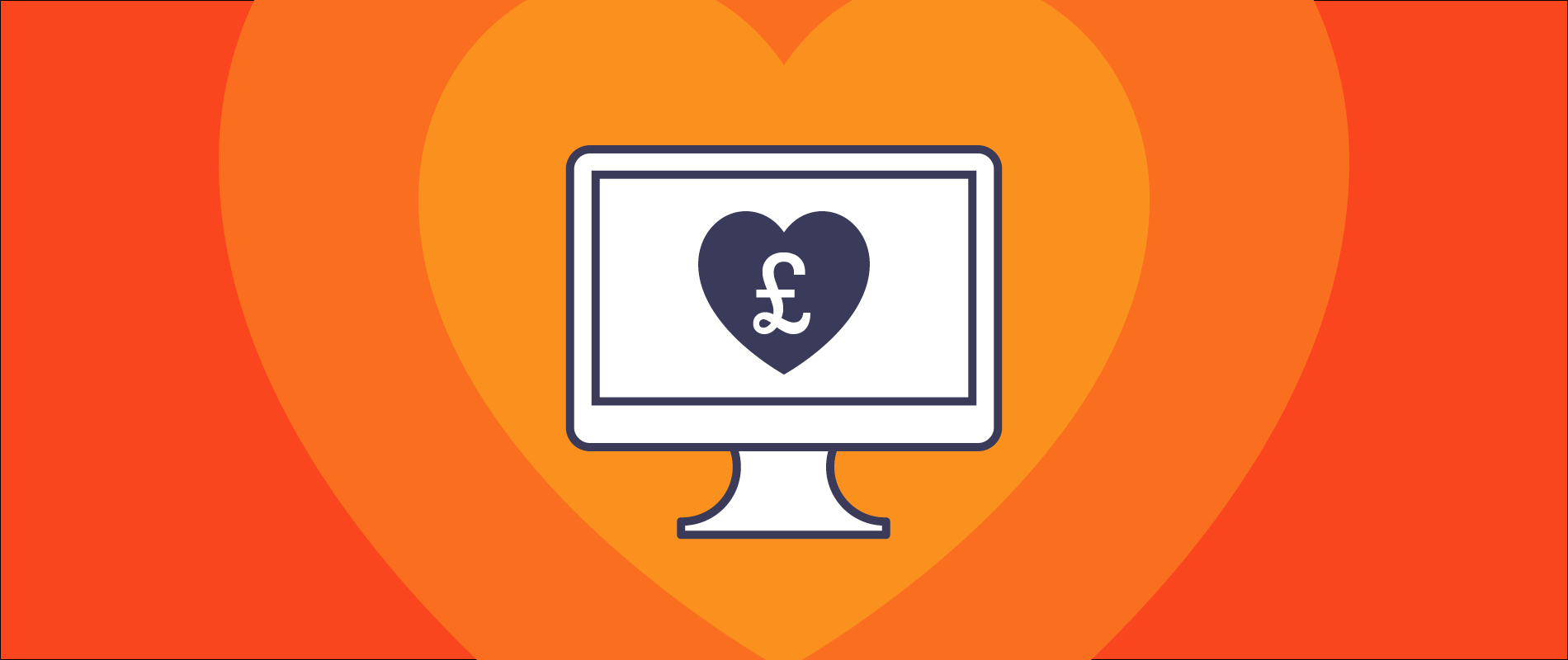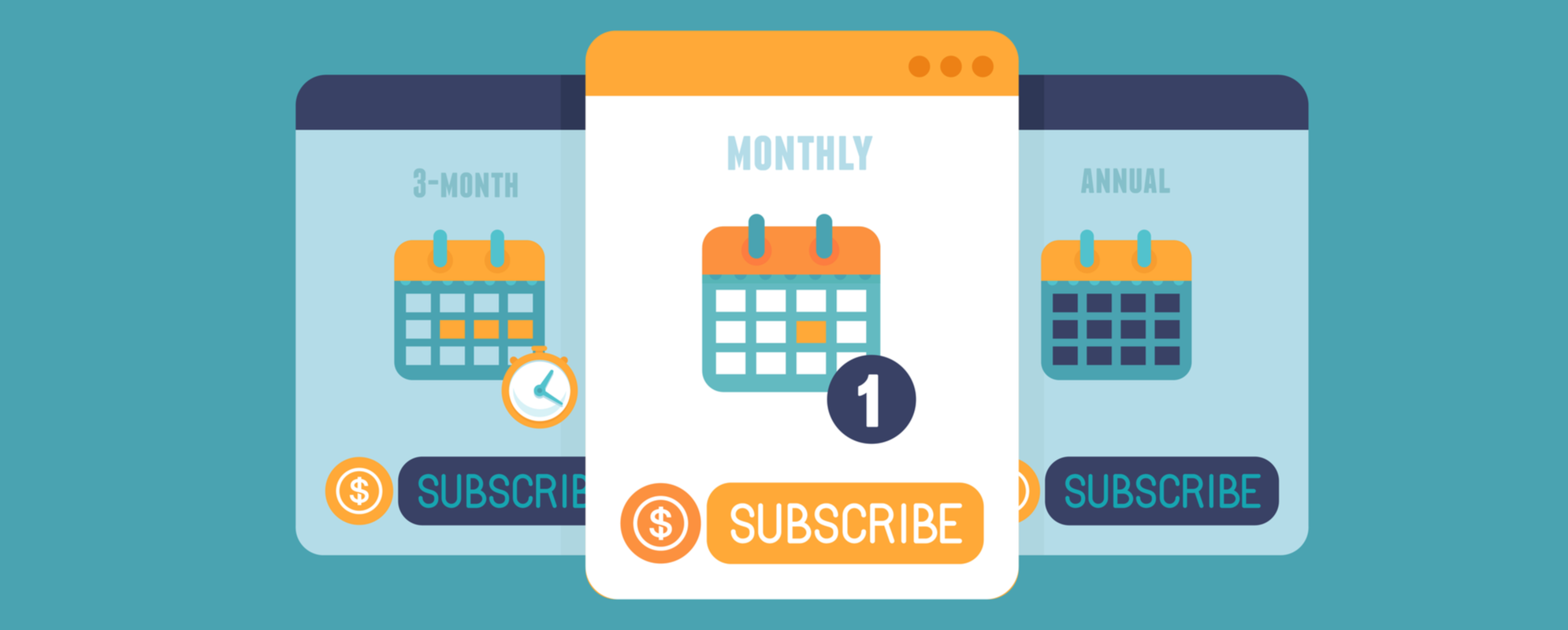
Get weekly
HubSpot updates
For SaaS start-ups, one of the biggest challenges is working out which pricing model will be best for their product and target market.
There are a lot of variables to consider, including:
- How much are your competitors charging, and where do you want to fit within the market (low, medium, or high end?)
- What features are you offering, and to what extent do they solve your users’ challenges?
- What’s your average customer lifespan (or estimated customer lifespan), and how does that affect how much you need to charge?
- How much money, on average, will your software product save or make for users?
When you understand how much money you need to make to be profitable, the choice of pricing model will become easier.
The most common SaaS pricing models are:
- Freemium
- Freemium with ads
- Per user pricing
- Tiered user pricing
- Per active user pricing
- Feature-based pricing
- Pay-as-you-go
- Custom
Freemium
The freemium model isn’t necessarily a comprehensive model in itself, but rather the introductory tier of the tier-based pricing model.
A freemium strategy works by offering features of your software at no charge and with no time limit. If the user finds value in your freemium solution, they are more likely to pay for advanced elements—assuming you haven’t given away too much.
One of our favourite examples of a freemium SaaS offering is HubSpot’s CRM.
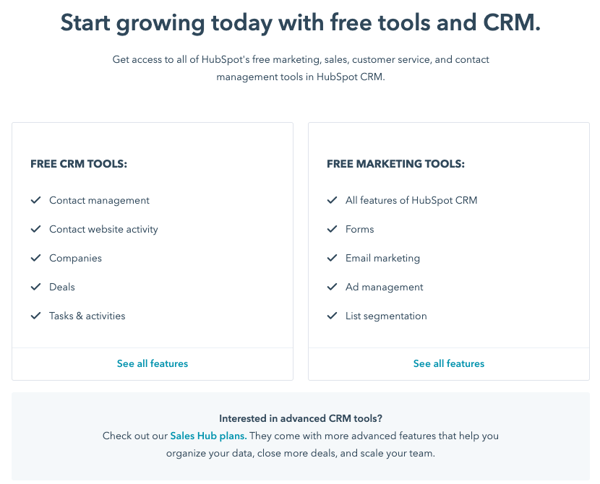
As a free tool, the HubSpot CRM offers phenomenal value, even when compared to the likes of Salesforce. It’s their pro Marketing, Sales and Service Hubs where the company then makes its money, with all three combining seamlessly into the CRM and building on the free tools offered initially.
Freemium—with ads
Some SaaS providers choose to supplement their income with ads hosted on their freemium platform. If the user upgrades to a paid plan, the ads are removed.
Display ads will only ever provide a limited income, and it’s important to ensure ad placement doesn’t negatively impact user experience excessively.

Per user pricing
For software intended for multiple users requiring individual accounts, per user pricing is one of the most common models.
While per user pricing is used by many SaaS organisations, including Salesforce and Microsoft Office 365, it does have a flaw. When price is directly linked to the number of users, inevitably your customers will look to limit how many users they purchase. From day one of their relationship with you, they’re considering how necessary your product really is. You’re also limiting the number of people within the company getting to know and love your software.
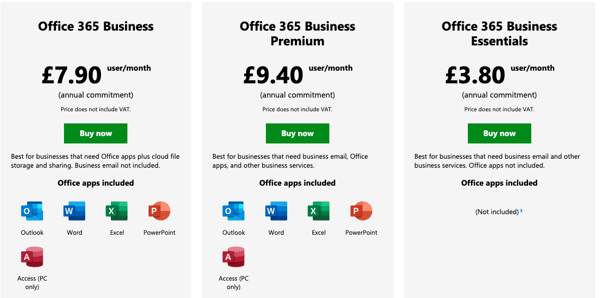
Tiered user pricing
Tiered user pricing overcomes some (if not all) of the issues with per user pricing in that the cost increases in bands rather than single digits, but it also throws up some alternative barriers.
Let’s take a look at Appcues as an example.
Appcues helps its customers to develop personalised in-product experiences, and offer a tiered user pricing model.
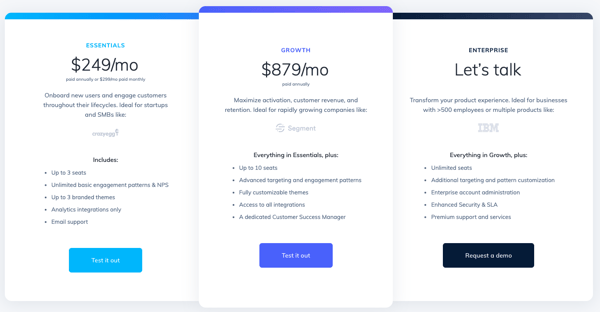
The Essentials package offers up to three seats, but what if you needed four? You’re left having to choose between a package that doesn’t fulfil your requirements from a user number perspective, or is more than 3x the price for one extra seat.
Appcues mitigates this issue by also offering additional features with their Growth package, so their customers aren’t only paying for seats.
This type of mixed-tiered pricing model can be effective, but you need to make sure the majority of the incentive for choosing a more expensive package is based on features—not seats.
Per active user pricing
Another alternative to the per user pricing model, per active user pricing ensures you only pay for the people making use of the product. This helps to resolve the problem of your customers worrying about purchasing more seats than they actually need.
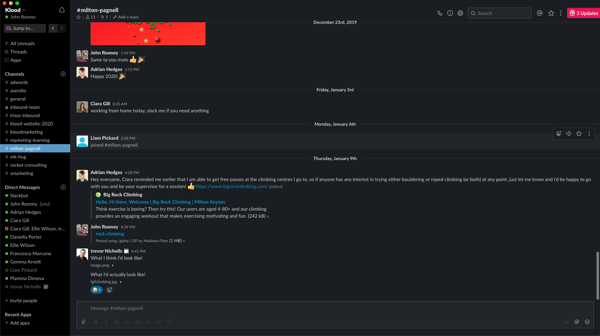
Slack is one high profile company using this model. They will actually refund their customers if some of the users that have been paid for aren’t using the service.
Jake Dunlap, CEO at Skaled Consulting, listed three reasons he loves the Slack model in a post on LinkedIn.
“1. It puts usage on products shoulders rather than sales. Product is incentivized to make things simple and drive usage because if the customer doesn’t use Slack, they don’t make money.
2. It encourages department and company-wide adoption from day one, or at least Month 1, as it spreads rapidly to other departments. There are no tradeoffs needed and the pitch is simple: If your people love it and use it, you pay. If not, you don’t.
3. It delights and amazes people when a company sends an email saying they refunded you X dollars because X% of people didn’t use.”
Feature-based pricing
A few of the pricing models we have looked at use a mix of user and feature-based pricing, but an example of a company using a pure feature-based pricing model is Unbounce.
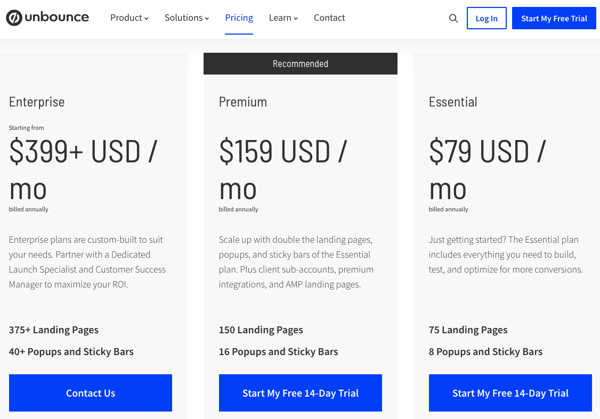
Upgrading to a higher package with the per user pricing model might be hard to justify when you’re simply paying more for the same features, but with feature-based pricing, you can ensure you’re providing value at each stage. The tricky part is working out exactly which features to hold back and which to offer at each stage—without compromising the overall value of the product.
Pay as you go
A lot of the plans we’ve been discussing involve buying into a contract or subscription—often for 6-12 months. The required commitment can be a barrier to purchase, which is one major advantage of the pay as you go plan.
However, while your customers won’t have to worry about paying for a service they don’t really use, it will be hard to predict exactly what the final monthly bill will be. Think carefully before adopting this model, but if your software isn’t intended for being used regularly, it might be a good option.
Custom
Many SaaS organisations will offer custom or ‘Build Your Own’ plans at Enterprise level. If a customer is willing to pay a premium for your service, it makes sense to offer them the chance to extract maximum value from your product based on their needs.
We’d advise only ever offering this as an additional option, rather than the sole pricing model. While being able to build your own plan will be attractive to many prospective users, some will need a little more hand-holding, and you don’t want to put off customers who simply aren’t sure what they need.
Want to find out more about offering freemium packages versus limited-time free trials? Check out our free guide on that very subject below...
